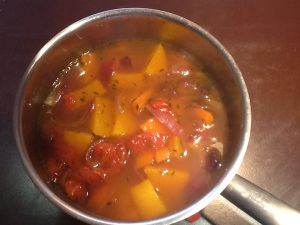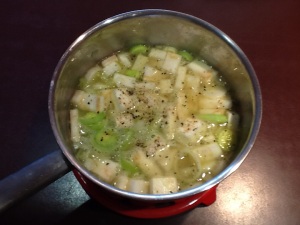We had this chowder for lunch yesterday and it was so easy and comforting that I wanted to share it. The recipe is from Meera Sodha’s New Vegan column in the Guardian and it is definitely one that will appeal to omnivores as well as vegans. She tops it with chipotle oil, but as I hadn’t got any chipotle flakes – there’s a limit to how many different jars of chilli I can use before they go past their use-by date – we finished it with a little chopped fresh chilli fried in some oil. I’m sure you could use green chilli instead or, for a fresher taste, a handful of chopped parsley or coriander. The soup can be made in advance and just re-heated and the topping added at the last minute. And I think it would make a wonderfully sustaining lunch taken in a flask whether for work or on a winter walk.
The sweetcorn needs to be defrosted before you start but, if you forget to get it out in advance, just put the frozen sweetcorn in a heat-proof bowl, cover it in boiling water and leave for a few minutes; drain and you’re ready to go. The original recipe called for a whole tablespoon of vegetable bouillon for this quantity – enough for 2 – which I thought might be a bit intrusive, so I have cut it back, and the end result didn’t seem short of flavour to us. I normally use coconut milk powder made up with water to avoid having to either eat several meals with coconut milk in or throw away the remains of 400ml cans – not a problem if you are doubling this recipe to feed 4, of course.

- 100g frozen sweetcorn, defrosted
- 1 tbsp rapeseed oil
- 1 leeks
- 1 small onion
- 2 garlic cloves
- 250g potato
- 1 rounded tsp vegetable bouillon powder
- 200ml coconut milk (tinned or made up from powder)
- 1/2 tsp cider vinegar or lemon juice
- small red chilli (or 1 tbsp chipotle flakes)
- 2 tbsp rapeseed oil
Start by preparing the vegetables. Trim, peel and finely slice the leek and onion. Peel the potatoes and chop into 1cm cubes. Peel the garlic cloves and grate using a microplane or ginger grater or, if you don’t have one, use a garlic press.
Heat a medium saucepan with a splash (say a teaspoon) of rapeseed oil, add the sweetcorn – which should fit in a single layer – and leave to cook over fairly high heat for 2 minutes. Then stir and leave for another 2 minutes, by which time the sweetcorn should be taking on some colour. Tip it into a medium bowl and put on one side.
Now turn down the heat a bit and add the remaining 2 tsp of rapeseed oil. When it is hot put in the sliced leek and onion and sauté over medium heat for 8 minutes, stirring regularly, until it is soft. Add the garlic and cook for a further 2 minutes. Meanwhile, boil a kettle of water and dissolve the bouillon in 250ml of boiling water. Add it to the pan with the potato and 1/2 tsp of salt and bring it all to the boil. Simmer for 10-15 minutes until the potato is tender – the original recipe said 10 minutes, but I found my potatoes needed a bit longer.
Put a large spoonful of sweetcorn aside to use as a garnish, and put the rest back into the pan, with the coconut milk and vinegar. Bring back to the boil, then take off the heat and give it a quick blast with a stick blender so the soup ends up thick but with a chunky texture, not smooth. Check the seasoning – it will need pepper and may need more salt or vinegar/lemon juice.
When you’re nearly ready to serve slice the chilli (with or without seeds depending on how hot you like things) and gently fry it in oil for a few minutes. Ladle the soup into bowls, spoon on the reserved sweetcorn and fried chilli with its oil, and thumb your nose at the cold and rain.




 Roughly chop the onions and crush the garlic. Put another 1 tbsp of oil to heat in a large pan. When it is warm add the kale stems, onions and garlic with a good pinch of salt. If you don’t have another use for the excess kale leaves, you can shred them and add them to the pot at this point to give a stronger flavour. I added a few leaves as the quantity of stems looked rather meagre.
Roughly chop the onions and crush the garlic. Put another 1 tbsp of oil to heat in a large pan. When it is warm add the kale stems, onions and garlic with a good pinch of salt. If you don’t have another use for the excess kale leaves, you can shred them and add them to the pot at this point to give a stronger flavour. I added a few leaves as the quantity of stems looked rather meagre.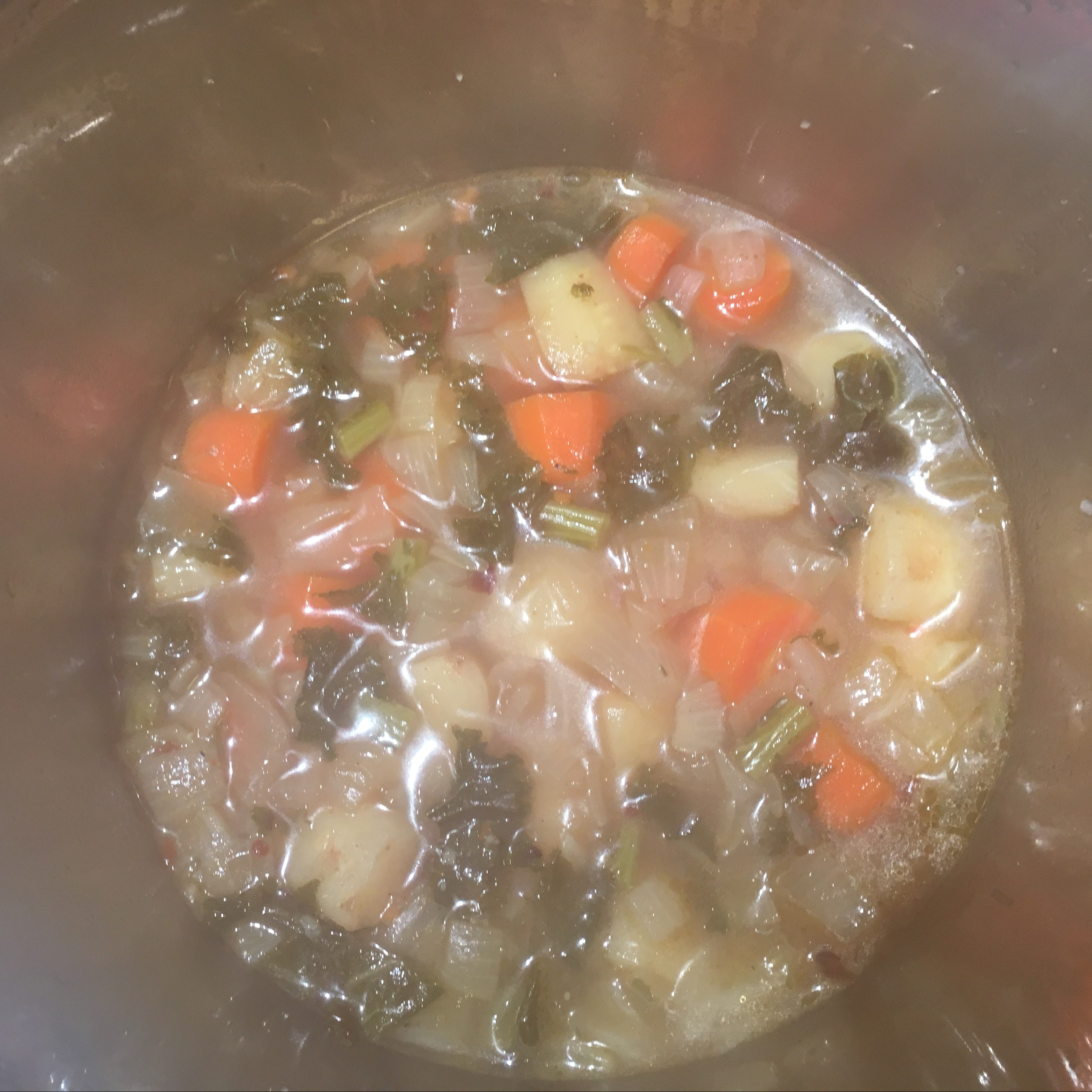
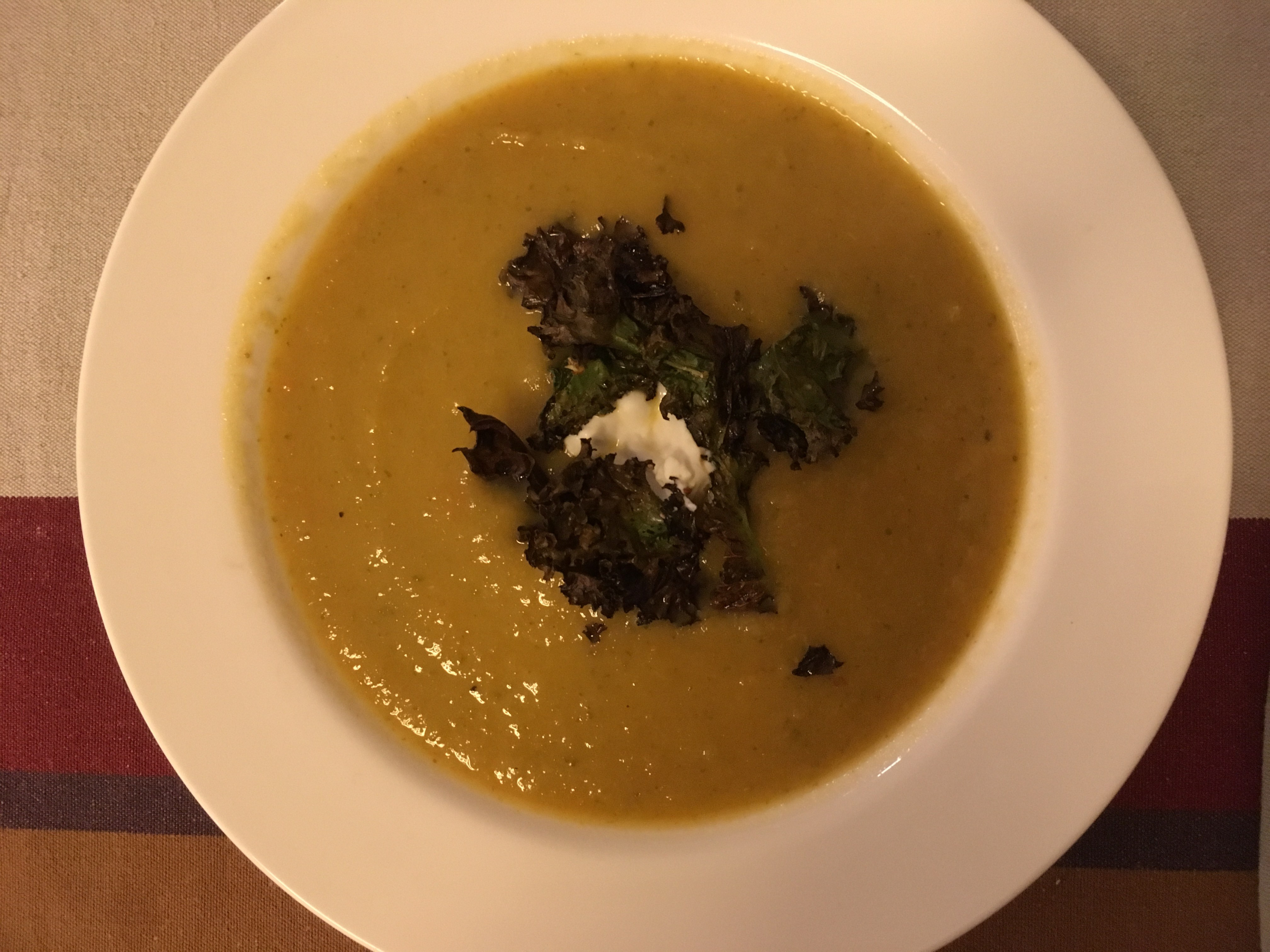
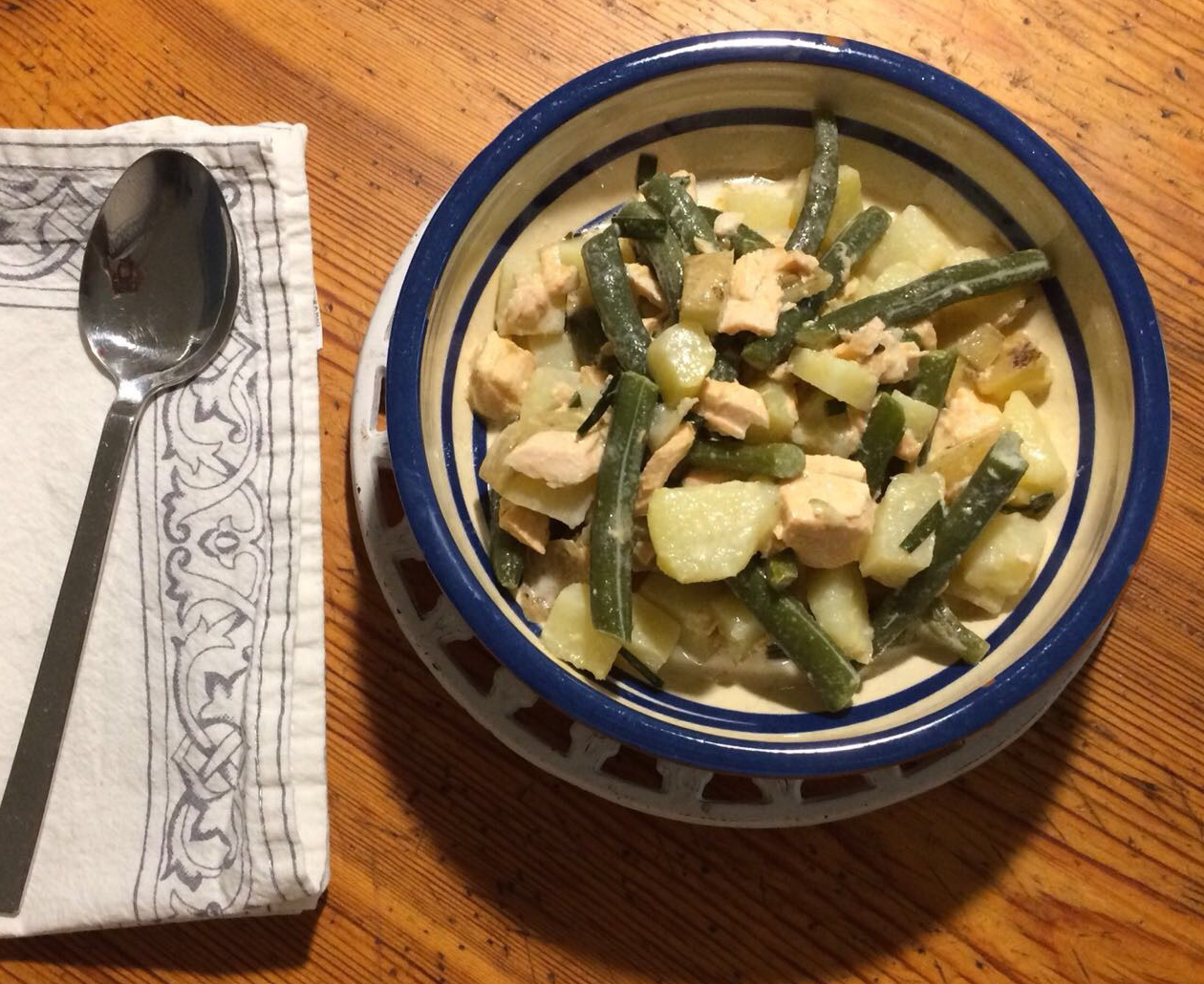 My friend Philippa made this for us when we had a girls’ reunion in Celra. She had been shown how to make it when she was visiting friends in Bergen. It is simplicity itself to cook, but looks and tastes rather sophisticated. As you can make it with frozen fish fillets and a long-life carton of stock it is a useful store cupboard standby. Any firm fish fillets will work and you can adapt the green vegetables to what you have to hand. Some asparagus spears, a head of fennel, or some cavolo nero all sound appealing. I can see it becoming a regular at our table.
My friend Philippa made this for us when we had a girls’ reunion in Celra. She had been shown how to make it when she was visiting friends in Bergen. It is simplicity itself to cook, but looks and tastes rather sophisticated. As you can make it with frozen fish fillets and a long-life carton of stock it is a useful store cupboard standby. Any firm fish fillets will work and you can adapt the green vegetables to what you have to hand. Some asparagus spears, a head of fennel, or some cavolo nero all sound appealing. I can see it becoming a regular at our table.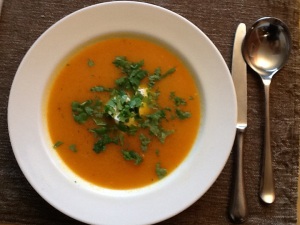

 Add the pasta or rice and simmer for 5 minutes (10 minutes if using rice). Shred the cavolo nero or kale, add it to the pan and cook for a further 5-10 minutes until it is soft.
Add the pasta or rice and simmer for 5 minutes (10 minutes if using rice). Shred the cavolo nero or kale, add it to the pan and cook for a further 5-10 minutes until it is soft.
